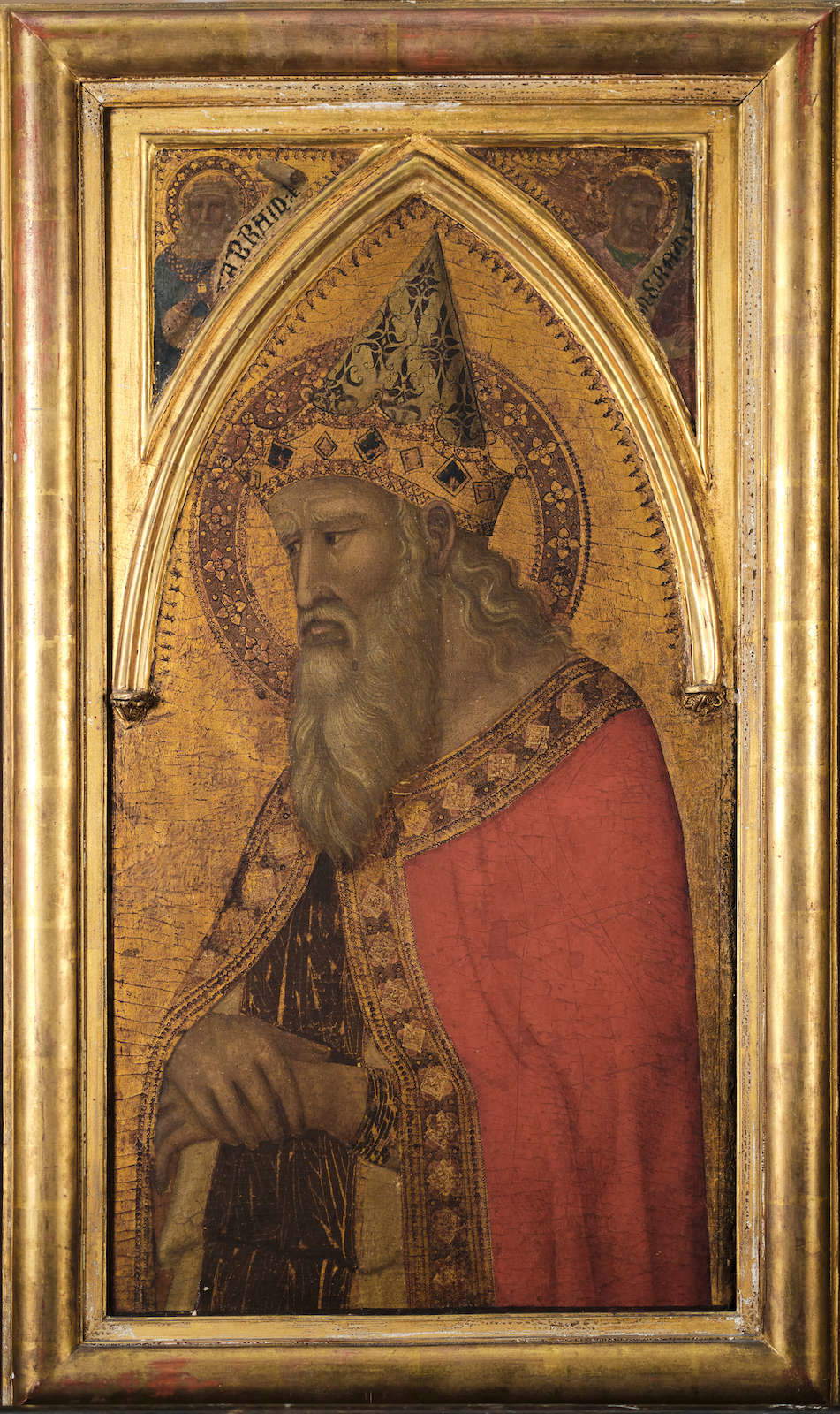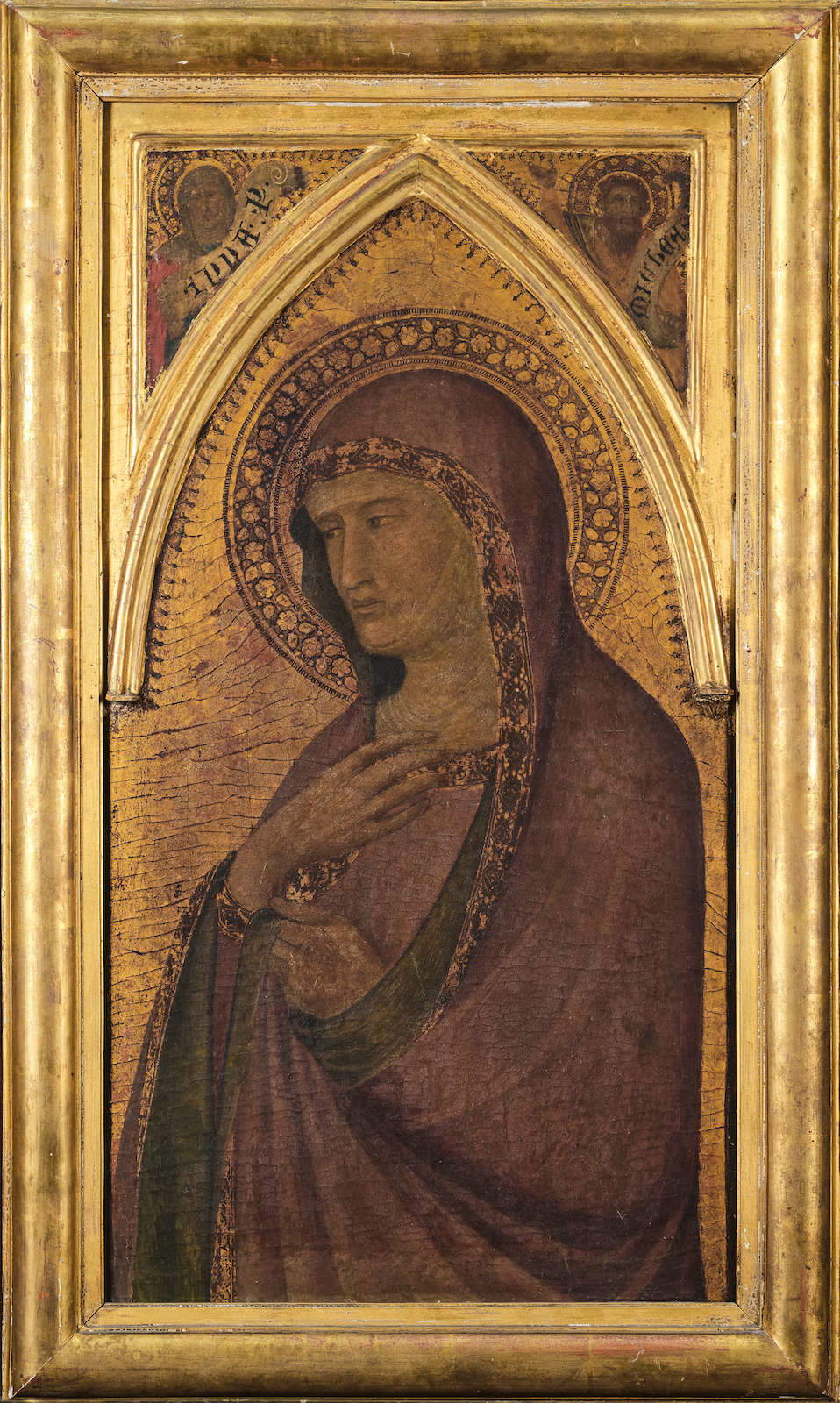French auction house Tajan announces that it has rediscovered two important works by Pietro Lorenzetti (Siena, c. 1280 - 1348): these are two poplar wood tablets, depicting St. Sylvester and St. Helena, from the former Ramé Collection. They were purchased in Paris in 1860 by magistrate François-Alfred Ramé (1826-1886), who had a strong passion for archaeology and history (his archives were later donated to the Archaeological Museum of Rennes). Preserved by his descendants, who had already sold part of their collection to Tajan in 1985, these two paintings were rediscovered by Cabinet Turquin, Eric Turquin’s art-history consulting firm. These two works by the great Sienese painter were probably part of a large altarpiece consisting of five or seven panels, which was later cut down, like most works of this type. The two panels will be sold separately on Dec. 13 with an estimate of 1.5-2 million euros for the St. Sylvester and an estimate of 400,000-600,000 euros for the St. Helena, a difference justified by the exceptional state of conservation of one compared to the other.
According to Tajan, the two panels add to the known corpus of works by Pietro Lorenzetti. Lorenzetti, his brother Ambrogio and fellow artist Simone Martini, all trained in the art of Duccio di Buoninsegna and sensitive to the work of the great Florentine artist Giotto, are the most important Sienese artists of the 14th century. Pietro Lorenzetti, born around 1280 and, like his brother, probably died during the great Black Death of 1348, produced frescoes, altarpieces and devotional paintings both in Siena and around Assisi, Arezzo and Cortona. Unlike the others, however, his temperament was dramatic and passionate. Preoccupied with the thoroughly modern idea of displaying pathos or tragic eloquence, his natural talent was accompanied by a profound ability to express human emotions. It was in this that he transformed the Sienese Byzantine tradition into a realistic representation of humanity.
There are only about 30 known works by Pietro Lorenzetti in the world: these include the Cortona Majesty preserved in the Tuscan city’s Museo Diocesano, the Tarlati Polyptych preserved in Arezzo, and the altarpiece of the Birth of the Virgin for Siena Cathedral documented in 1335-1342 (Siena, Museo dell’Opera del Duomo). Noteworthy frescoes include the one in the left transept of the lower church in Assisi, c. 1320-1326, the one in the former chapter house of the convent of San Francesco in Siena (Siena, Church of San Francesco and Museo dell’ Opera del Duomo) also c. 1326, and finally the one in the church of Castiglione del Bosco dated 1345.


Coming from a single complex, they depict two closely related saints. St. Sylvester was a man of power: pope from 314 to 335, under the reign of Emperor Constantine I, he held the reins of the Church at a crucial time in Christianity. St. Sylvester is depicted wearing a Byzantine crown: this presence of oriental attributes recalls his key role in the struggles between Rome and Byzantium, still the subject of a major debate in 1325. Her fate was inseparable from that of the emperor, whom she baptized along with her mother Helen, making Constantine the first Roman ruler to tolerate and then embrace Christianity. Helena is generally portrayed as a high-ranking figure, as she was an empress who later converted and worked to spread the Christian faith. She was canonized a saint by both the Catholic and Byzantine churches. According to legend, it was she who found the true cross of Christ.
According to our knowledge, the two saints cannot be linked to any work of Peter that has come down to us. “The iconography,” explains Eric Turquin, “leads us to suggest a Franciscan origin and the material elements noted above, which come from an altarpiece of the type by Duccio (Siena, Pinacoteca Nazionale No. 28): indeed, we find there a main register composed of five paneled sides with half-length saints-but there could have been seven-side by side with a central Madonna and surmounted by a register of triangular pinnacles. This proposal also finds its justification in the absence of a trace of the upper crossbeam, which is generally found on the reverse of this type of altarpiece, at the base of the pinnacles and which disappeared in our panels during their dismemberment.”
Again according to Turquin, the attribution to the production of Pietro Lorenzetti would be “undeniable.” “The typology of the saint, an old man with a worried look marked by the still stereotyped lines of his forehead and the contour of his deeply slit eyes, does not suffer from hesitation,” the art historian declares. "Less easy, however, is to define with certainty their chronological placement within the catalog of the master’s works. St. Sylvester’s filiation is evident both in the severe old grays painted by Peter in the frescoes of the lower basilica in Assisi shortly before 1320, and in those of some of the medallions that mark the borders framing the various scenes of the Passion, namely those whom Christ encounters in the Descent to Limbo painted around 1326. Indeed, Saint Sylvester’s worried expression, though softened, recalls that of the saints who flank the Virgin in the Aretine altarpiece. Viewed frontally, their bulkiness occupies the entire space, wedging them forcefully within the panels. However, St. Sylvester, because of his three-quarter position and narrower corpulence, consolidated by the position of his arms under his mantle, enjoys a wider spatial breath. St. Helena, more imposing, with her forward arm wrapped in drapery, and standing slightly backward, thus excavates space. Delicate modeling, a slight transition between shadow and light, more nuanced in the saint, describes the faces. The dynamism, volumetric force, and dramatic tension of Assisi or Arezzo, the legacy of Cimabue and Giotto, are weighted here, the dramatic intensity having lost force in favor of a more important solemnity and interiority. All these characters also animate the figures in the frescoes in the chapter house of the church of San Francesco in Siena, some of which critics place around 1336 but others, including Volpe, place around the years 1325-1326."
One particular question mark remains, however, according to Turquin: Peter’s use of chrysography to emphasize the folds of St. Sylvester’s robe. This practice, common in Byzantine painting, was passed on to 13th- and early 14th-century Italian artists: it was adopted by Cimabue in Florence and Duccio in Siena. If, however, it soon became obsolete for Duccio, Simone Martini and their colleagues and followers, chrysography still remained relevant in Genoa at the end of the 14th century: here Barnabas of Modena covered the mantle of his virgins with this gilded graphic net, probably satisfying the taste of patrons who were passionate about Venetian art. It is not excluded, according to Turquin, that Pietro Lorenzetti also responded to such a request coming from religious patrons strongly dominated by the Byzantine tradition (which, however, remains to be proven in the absence of documents, which moreover more often than not provided for the use of the best colors and the finest gold for the creation of religious works).
An important discovery, in short, it will be seen what figure Tajan’s hammer will score.
 |
| Two tablets by Pietro Lorenzetti found in France. They will go to auction |
Warning: the translation into English of the original Italian article was created using automatic tools. We undertake to review all articles, but we do not guarantee the total absence of inaccuracies in the translation due to the program. You can find the original by clicking on the ITA button. If you find any mistake,please contact us.